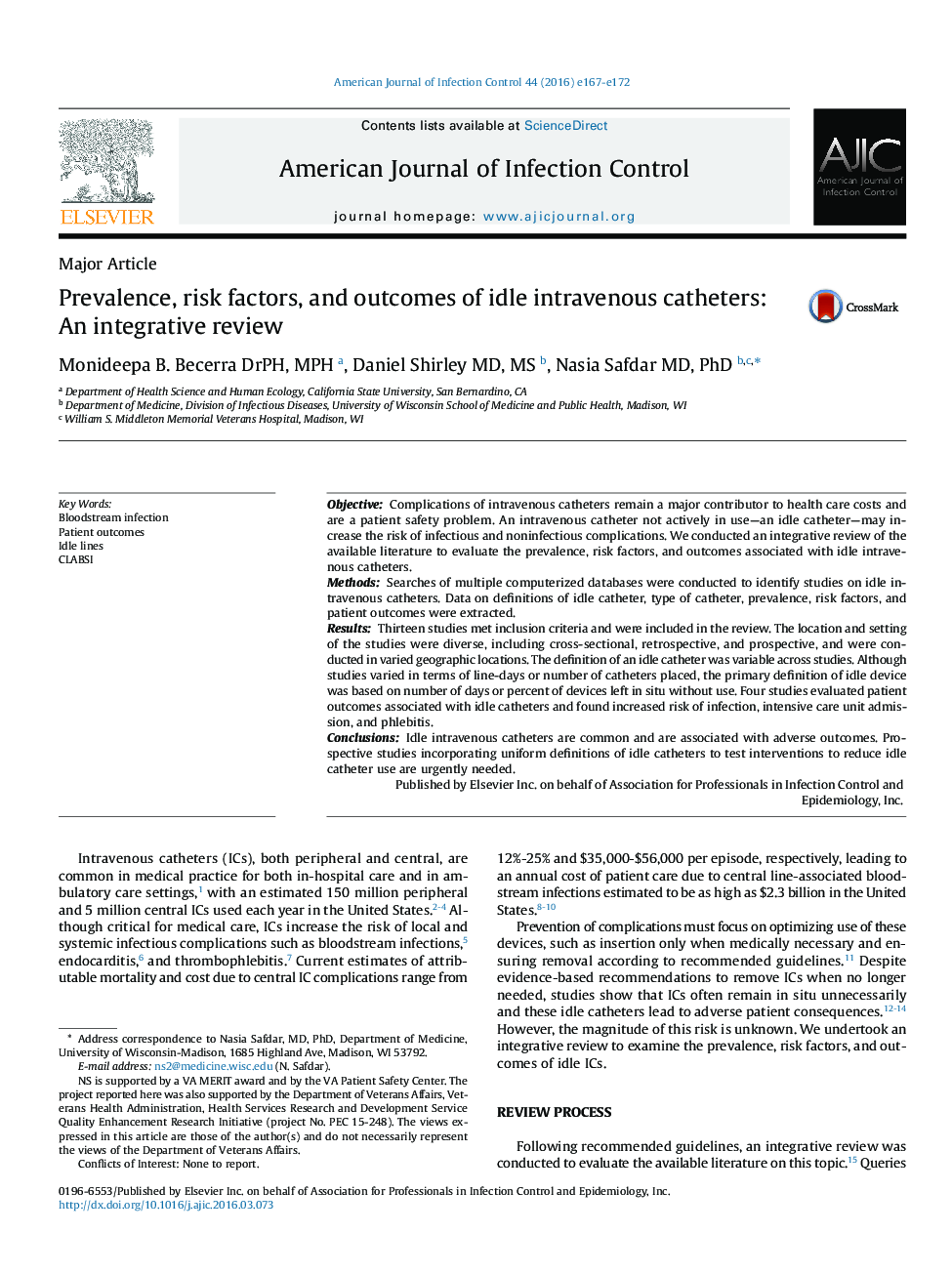| Article ID | Journal | Published Year | Pages | File Type |
|---|---|---|---|---|
| 5566805 | American Journal of Infection Control | 2016 | 6 Pages |
â¢Integrative literature review compared patient outcomes with idle catheter use.â¢Idle catheter use correlates with risk of infection and adverse hospital events.â¢Interventions to reduce idle catheter use are urgently needed.
ObjectiveComplications of intravenous catheters remain a major contributor to health care costs and are a patient safety problem. An intravenous catheter not actively in use-an idle catheter-may increase the risk of infectious and noninfectious complications. We conducted an integrative review of the available literature to evaluate the prevalence, risk factors, and outcomes associated with idle intravenous catheters.MethodsSearches of multiple computerized databases were conducted to identify studies on idle intravenous catheters. Data on definitions of idle catheter, type of catheter, prevalence, risk factors, and patient outcomes were extracted.ResultsThirteen studies met inclusion criteria and were included in the review. The location and setting of the studies were diverse, including cross-sectional, retrospective, and prospective, and were conducted in varied geographic locations. The definition of an idle catheter was variable across studies. Although studies varied in terms of line-days or number of catheters placed, the primary definition of idle device was based on number of days or percent of devices left in situ without use. Four studies evaluated patient outcomes associated with idle catheters and found increased risk of infection, intensive care unit admission, and phlebitis.ConclusionsIdle intravenous catheters are common and are associated with adverse outcomes. Prospective studies incorporating uniform definitions of idle catheters to test interventions to reduce idle catheter use are urgently needed.
